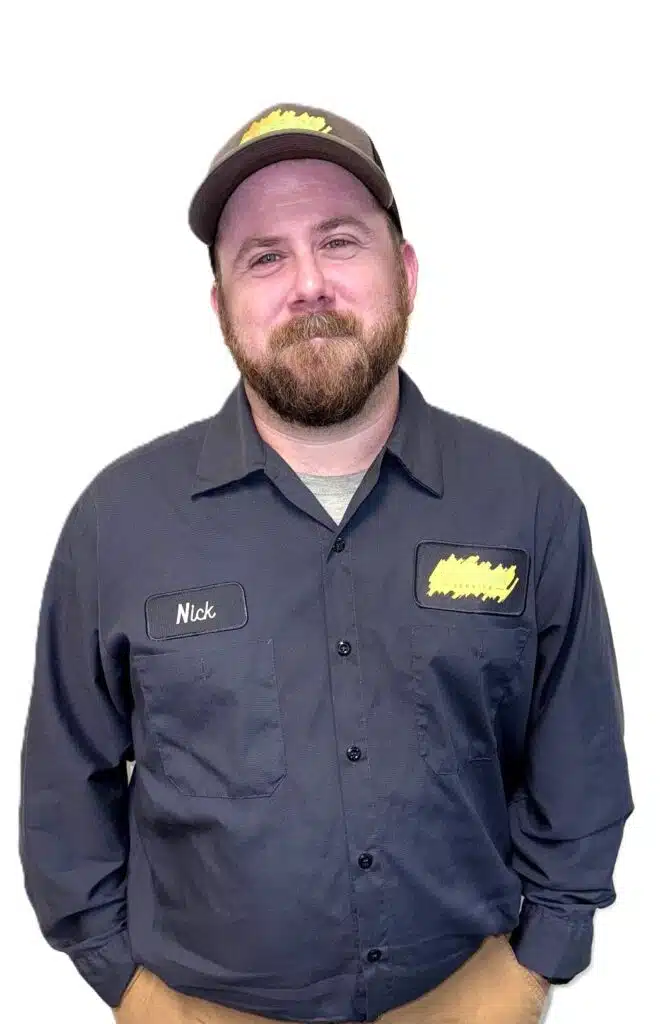Don’t Ignore These Signs of Termite Infestation
Termites work quietly, but the damage they leave behind can empty your wallet faster than just about any other pest. Many people only find out they have a termite problem after thousands of dollars in repairs are staring them in the face. Spotting the early signs of termite infestation isn’t just good sense; it can save your budget, your peace of mind, and your home’s structural integrity.
This guide covers what signs to look for, how termites stand apart from other pests, and the best steps you can take if you spot evidence of a termite colony. Knowing what to watch for means you’re ahead of the game and you won’t be caught by surprise.
Clear Signs of Termite Infestation
Termites are small, but they aren’t invisible. If you know what to check, you can spot signs of termite activity early when damage is less costly to fix. Let’s look at the most common warning signs of termites in and around your home:
1. Mud Tubes and Mud Tunnels
Mud tubes are a signature of subterranean termites. These pencil-thin tunnels run along foundations, crawl spaces, and walls. Built using soil and saliva, mud tubes protect worker termites as they move between nests and food sources. If you notice mud tunnels snaking up your home’s foundation, that’s a sure sign of active termite infestation. For clear examples of these signs, the Terminix termite signs page is a useful visual guide.
2. Hollow-Sounding or Damaged Wood
Tap on wooden structures—baseboards, door frames, window sills—and listen. If the wood sounds hollow or papery, termites may have eaten through it from the inside out. As termites hollow out wood, it loses strength and often develops tiny kick-out holes, another early sign of termite damage lurking just beneath the surface. Subfloor and sagging floors, as explained by Mississippi State’s extension service, often point to deep-seated termite activity.
3. Discarded Wings and Swarmers
During certain times of the year, you may find discarded wings on windowsills, near door frames, or in spider webs. These wings are left behind by termite swarmers (also known as alates or flying termites) as they leave the parent colony to start new colonies. Discarded wings signal that a termite colony is nearby, and new colonies could be forming inside your home.
4. Piles of Termite Droppings (Frass)
Drywood termites leave behind piles of tiny, pellet-shaped droppings known as frass. These droppings often look like sawdust or ground pepper and can collect beneath infested wood, windowsills, or even in your attic. If you spot unexpected sawdust-like piles, don’t ignore them.
5. Blistered or Buckling Paint, Tiny Holes in Drywall
Paint that bubbles, blisters, or cracks can be a sign of termite activity beneath the surface. Drywood termites inside walls create small pinholes (kick-out holes) and may cause your paint to look uneven or damaged. Sometimes, the first sign is visible only after peeling back the paint sheet.
6. Sagging Floors, Ceilings, or Sticking Doors
As the wooden structure is eaten away, the support weakens. Floors or ceilings may begin to sag, and doors can become tight or stubborn in their frames as the wood swells with termite moisture. Don’t dismiss a sagging floor or a new issue with a door, as these changes often have termites as the hidden culprit.
Quick Reference Table: Common Signs of Termite Infestation
| Sign | What to Look For | Where to Check |
|---|---|---|
| Mud tubes/mud tunnels | Pencil-thin, brown tunnels | Home’s foundation, crawl spaces |
| Hollow-sounding wood | Wood sounds empty or thin when tapped | Baseboards, door frames, subfloor |
| Discarded termite wings | Piles of small, translucent wings | Windowsills, doorways |
| Termite droppings (frass) | Sawdust-like piles, pellets | Near infested wood, attics |
| Blistered/buckled paint | Paint bubbles, blisters, or peels | Walls, ceilings |
| Sagging floors or doors | Uneven, droopy floor; doors hard to open | Throughout home |
How Termite Infestations Differ from Other Pests
Not every problem with wood signals termites. Other pests cause their own mischief, and confusing one for another can lead to wasted time, money, and stress. Here’s how termite signs stack up against other common offenders:
- Carpenter ants also tunnel through wood, but they leave behind wood shavings instead of pellet-like frass. Their tunnels are clean, smooth, and often visible near entry holes.
- Carpenter bees drill round, neat holes into wood, but leave coarse sawdust below and don’t build mud tubes or tunnels.
- Rodents chew, but their damage usually comes with shredded insulation, gnaw marks, and droppings that look nothing like those left by termites.
- Wood rot and water damage can mimic termite-damaged wood but lack mud tubes, frass, or wings.
When in doubt, professional pest identification always pays off. Superior Service’s local teams have a sharp eye for spotting a true termite problem versus issues caused by other pests.
What to Do If You Spot Signs of Termite Infestation
If you notice one or more of these signs of a termite infestation, act fast. Termites won’t stop eating until the food source runs out, and that “food” is the wood that keeps your home standing.
Don’t try to solve a major infestation with home remedies meant for ants or roaches. Termite colonies are tough, and even if you kill some worker termites, the queen and colony can survive deep in the structure. Calling in a termite inspection specialist is the best way to stop further damage.
If you’re searching for a trusted team for other pest control issues, Superior Service offers reliable pest control solutions for nearly any pest outside of termites. Address warning signs quickly so you avoid significant damage and expensive repairs later. For minor pest concerns, check out this DIY pest control guide.

Nick – Pest Control Technician
Reviewed by Nick, Licensed Pest Control Technician – 6 Years of Experience
Nick has spent the last 6 years helping homeowners protect their spaces from unwanted pests. As a Pest Control Technician with Superior Service, he’s known for his thorough inspections and effective, family-safe solutions. Nick is passionate about making homes healthier and more comfortable for every customer.
Contact Superior Service
Catching the warning signs of termites early on can save you thousands in repair bills and keep your home safe. Watch for mud tubes, hollow wood, discarded wings, frass, sagging floors, and blistered paint. Each of these can mean you have an active termite colony gnawing away at your investment. Don’t shrug off suspicious signs! A quick check and prompt termite treatment make all the difference.
While termites require a specialized approach, any other pest control challenge is just a call away. Superior Service’s local teams bring expert knowledge and commitment to protecting homes, so if you need help with pest management or just have questions about what’s crawling around your home, reach out for professional pest control services. Your home is worth it.
"*" indicates required fields





